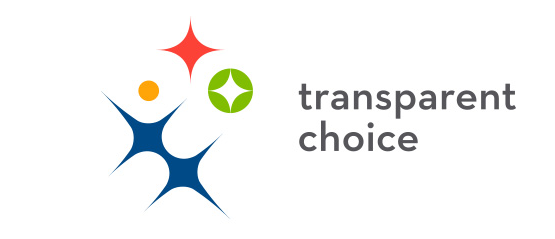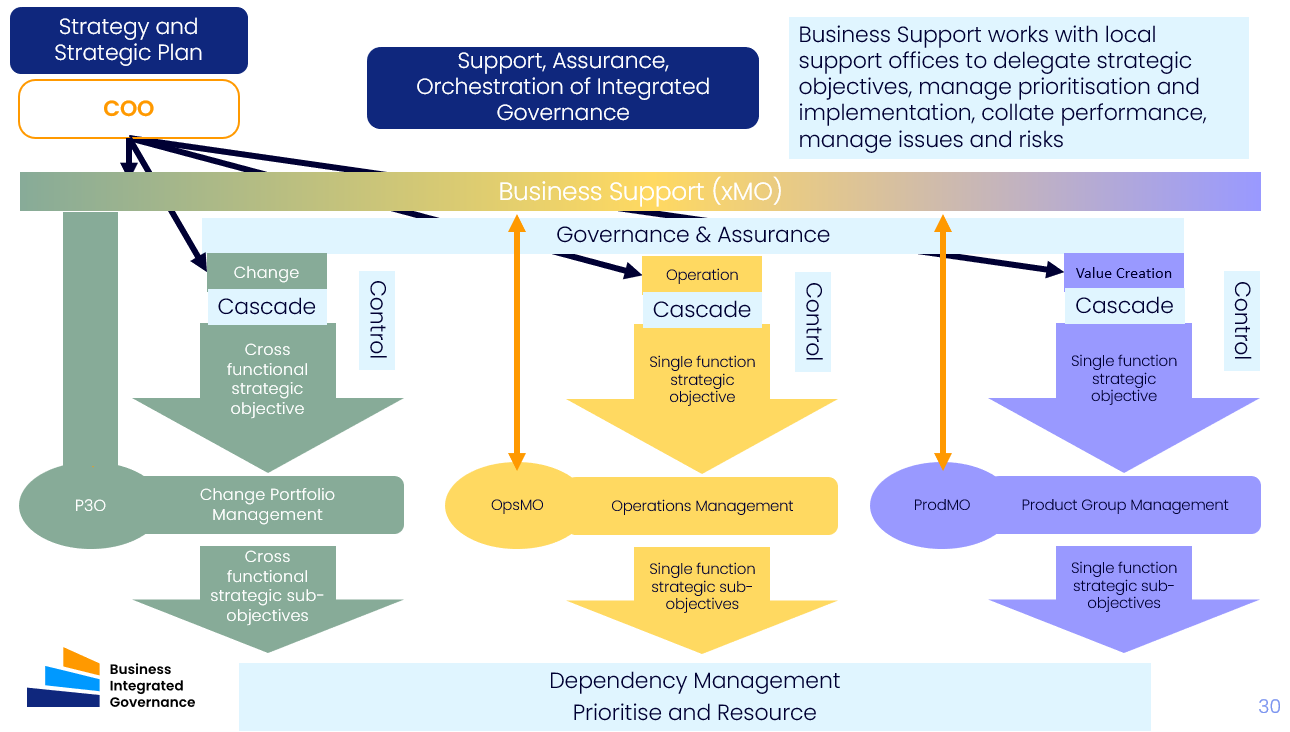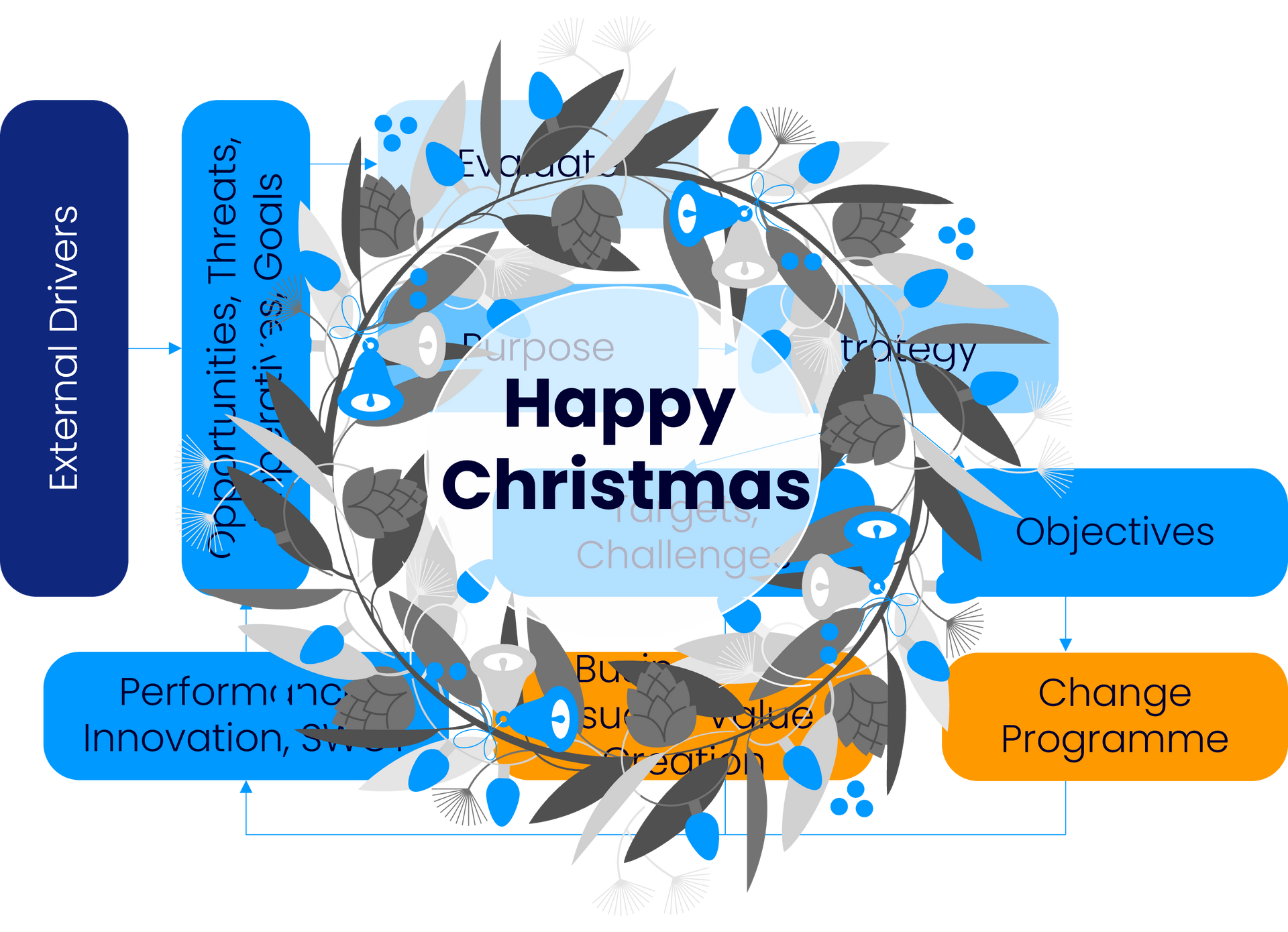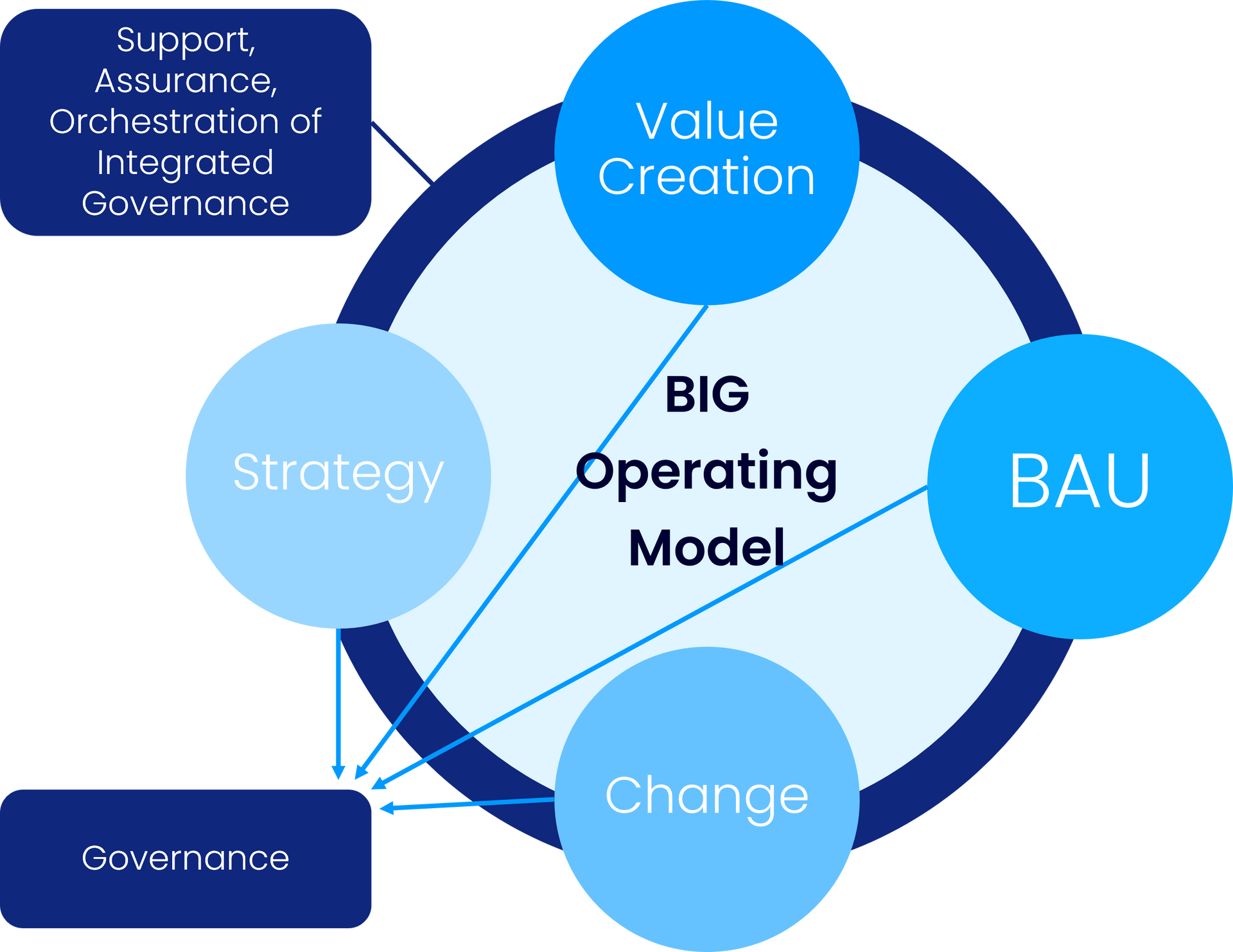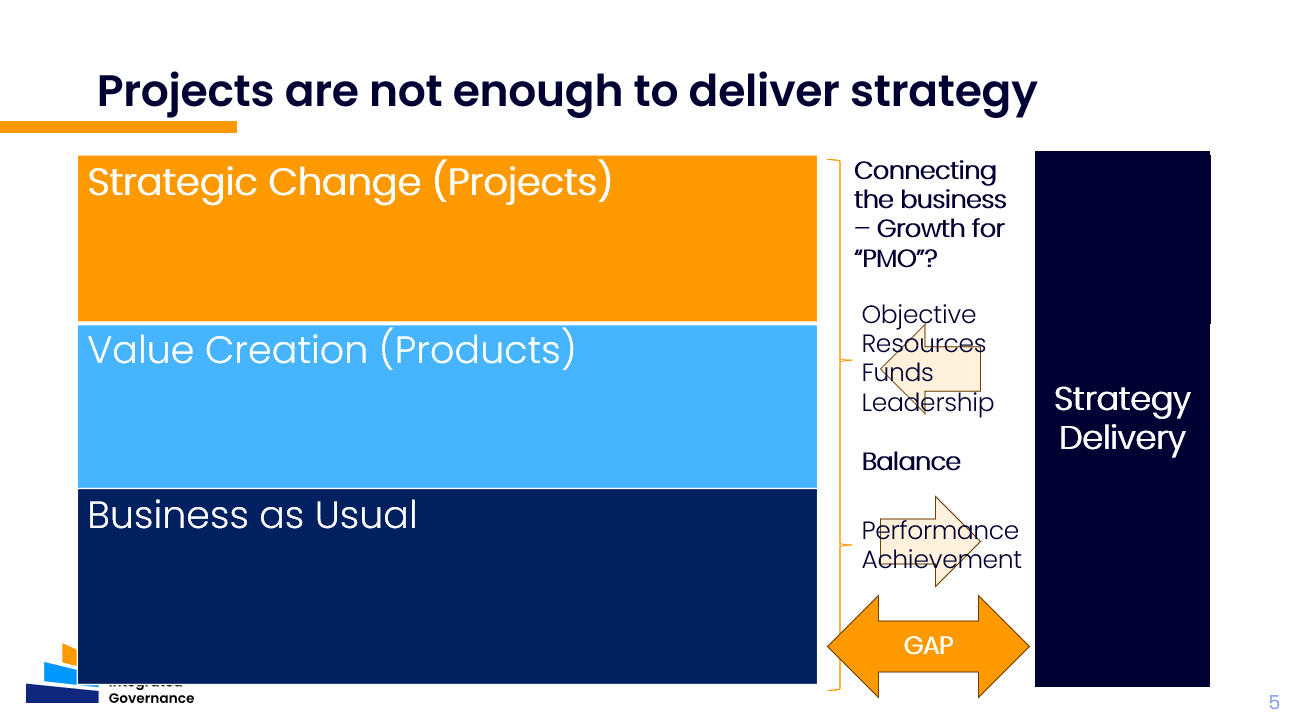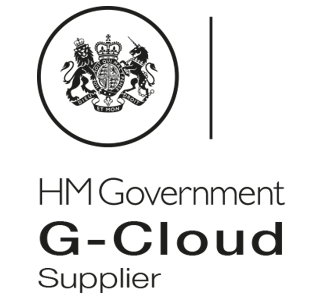Bookable event:
Accountability - impossible without systematic prioritisation?
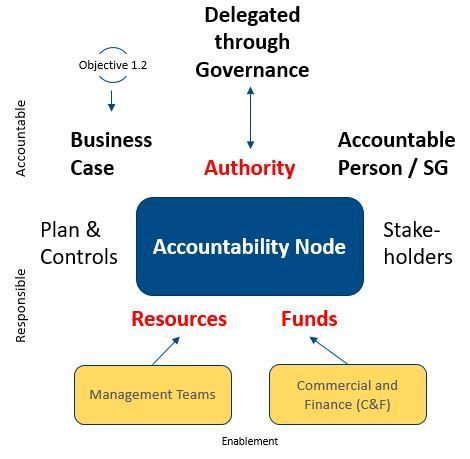
Session presented 15th March
It is a simple fact of business life that the stuff that gets done is the stuff someone is accountable for. Does anyone disagree?
Our view is that without accountability working - it is impossible to deliver strategic outcomes. No accountability / poor management of accountability = things not achieved. It is that simple.
Secondly - accountability will not happen unless people are
empowered - with
allocations of resources, funds and leadership time - not just hollow appointments or impositions. Without allocations - sponsors have to go hunting, competing, beg-borrow-and-stealing. That is not a good culture (feudalism was outlawed in England with the Tenures Abolition Act 1660). To receive allocations for their strategic initiative - a sponsor must have some kind of priority in the eyes of the organisation.
But the problem is - while we can prioritise any list of things - 'priority' can be somewhat in the eye of the beholder, and we may not have visibility of priorities - or how they have been established. And priority changes. And how do you know if team lead X or Y is prioritising workloads in line with your view (or 'the view') of priority? But what do you - or does anyone do with it?
An example. I have a strategic portfolio of projects to deliver shared services. The projects are dependent. We know the busienss priority for the portfolio, and the relative importance of each project. However - I need busienss engagement, and the department heads I need to work with have service targets they have to meet which is the focus for their time. Their priority is not my priority. Their prioritisation to local issues for some key resources has the ability to massively disrupt the overall portfolio benefit realisation. Yet project managers have to go into mortal combat with every team lead to get some attention...
How can we possibly improve strategy delivery if fundamentally we cannot prioritise systematically then act upon it - or manage visible priorities - especially when matters cut across an organisation like strategy delivery inevitably does?
Some would say - it is up to grown-ups to work the problem between them - but how many of us see the breakdown of sensible debate leading to the 'say so' of the most senior person and their value judgements?

How about instead - we take away the rocks and stones and knuckle dusters - and equip people with information?
Event Summary:
Dan and David welcomed attendees and set the stall out with respect to the importance of accountability to the achievement of strategic objectives.
David presented his view of the strategic process which took the organisation purpose, stirred in opportunities, threats, imperatives and goals (OTIGs) to drive a Vision. The vision would be the basis for a strategy to advance from current state to future state, with a strategy defining the method of approach - including Objectives, Targets and Challenges (OTCs) to be addressed along the way.
We noted that to be achieved, we need to appoint accountable people. We noted that even at this high level, the organisation would be prioritising the objectives it had.
The presentation moved on to discuss the need to balance busienss as usual activity, value generation and change - and make choices on how to spend finite resources and funds in each of these areas. The discussion developed to explore how difficult this can be across an organisation which could have personal and departmental objectives to contend with.
The next discussion on prioritisation was then about how to deploy funding / resources at a macro level between BAU departments, product teams, and strategic programmes. For example, where a department has provided a service for years, the service level is known, targets definable, and resources are estimable. Department busienss plans can make the case, show what funds are needed to enable justifiable local innovation spending, and set aside resources to support strategic initiatives We referred to prioritisation and allocation of 'fist-fulls' of funds / resources.
What we identified as difficult was the prioritisation of emergent opportunities. Candidate projects that did not fit into the strategic portfolio, or appear in the budgeted local innovation spending plan. Moreover - some candidate projects may span several departments, and need resources from some, while delivering benefits to others.
We then asked our audience to give their view on how they can spot prioritisation isn't working - and we picked up 20+ points! A selection included:
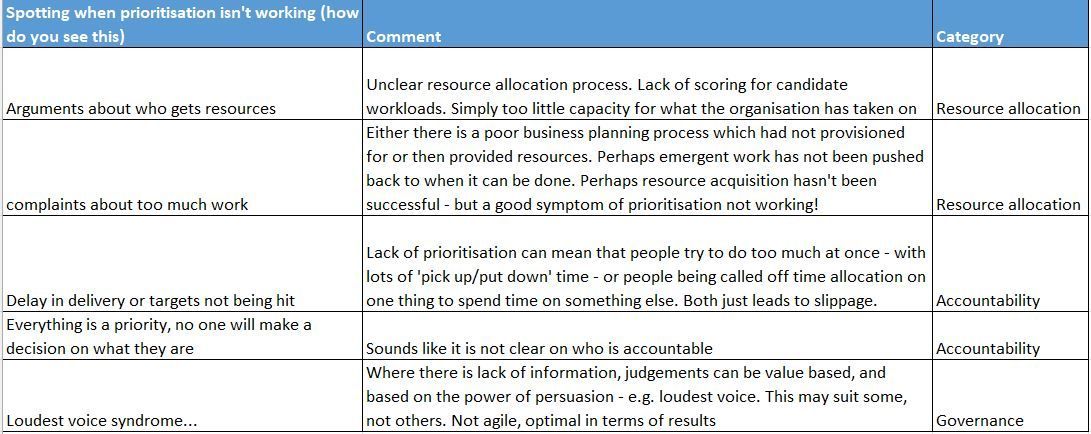
Dan presented a techniques, technology and a scenario to illustrate the challenge. He signposted AHP (Analytic Hierarchy Process) as a method available to us, and highlighted the technology solution available from TransparentChoice to support this. In essence, it is a modelling approach that involves the identification of strategic drivers ('Increase Revenue', 'Increase Customer Satisfaction' etc.) which can be given relative importance. Options (e.g. projects) can be rated against each driver (against suitable guidelines), and the relative merit of each option can then be calculated - and the relation to cost and risk can be assessed - leading to a ranking of options. This can be helpful when selecting the right mix of project considering value, cost and risk - and bearing in mind funding / resourcing constraints. This data based framework can be very useful as it has unique advantages when important elements of the decision are difficult to quantify or compare, or where communication among team members is impeded by their different specialisations, terminologies, or perspectives.
In the scenario, we discussed the importance of good definition, realistic estimating (of value, risk cost) - and concluded that there is more to prioritising than simply the calculation - there is a clear need for effective business support, information, data platform, an effective governance operation and leadership (to drive and provide resources.)
The scenario included strategic objectives from a CEO, department objectives from sales and operations, and illustrated the challenge facing IT when deploying resources onto project workloads that would come from all of them. In relation to the introduction - the CEO would have the strategic portfolio - the initiatives that would be cross cutting - that would get funded out of the strategic portfolio. The projects for sales - those would be rated against their drivers and they would select which projects get done in sales - and escalate for more funding if a case could be made. Similarly for operations.
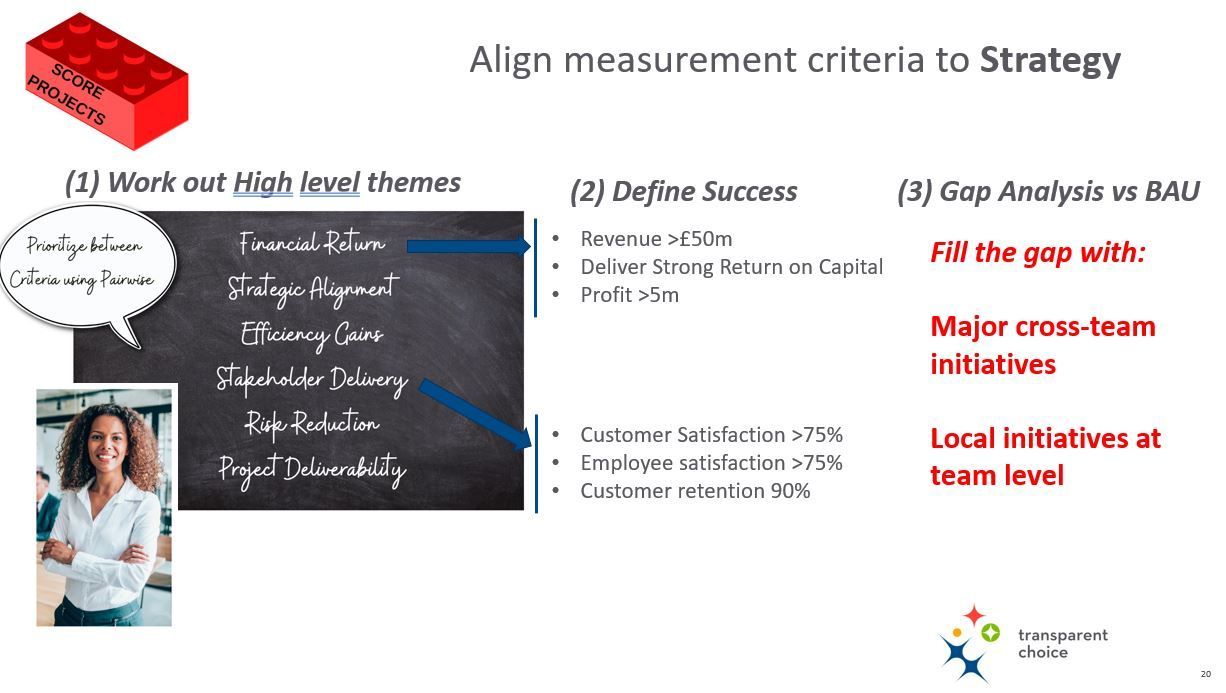
The challenge would be for IT - that had its service level to resource, and its background upgrade/maintenance programme - but work packages would appear from sales and operations to support their projects - so an understanding of the value of the projects would help IT management in deploying finite resources.
We then asked attendees what they had tried to get prioritisation working (14 responses), but most responses were further examples of prioritisation problems. Specific things people had tried included Weighted Shortest Job First (Scaled Agile framework for prioritising backing jobs) and pairwise comparison of projects. Some have tried to used balance scorecards, but found they could not react fast enough to changing / hidden priorities.
In summary - we had talked about the importance of accountability. We explained that to be accountable, we must be empowered. To be empowered means allocating resources / funds - and allocating has to be based on systematic prioritisation. We talked through a method and signposted tooling - then outlined a typical scenario that needs help. Asking our audience, there were many examples of how prioritisation was failing, and in asking what people had tried the answer to that was 'very little'.
Our invitation to the audience was then to consider talking to us about their situation - and we offered an engagement approach to build consensus on current state / capability before rushing to offer a solution. We understand starting improvement initiatives is difficult! We positioned Deepteam as a company that can help with support end to end for defining and delivering improvement, and positioned Transparent Choice as the provider of technology to assist with information-based prioritisation.
This session can be repeated privately for audiences that want to facilitate a similar discussion internally.
Agenda

- The importance of accountability to strategy delivery, and the importance of prioritisation to empowerment.
- Challenges in balancing the cascade of prioritisation and the challenges of BAU, Value Generation and Change
- Spotting when prioritisation isn't working
- Translating objectives and targets into a scoring system
- Example scenario - IT, Sales, Operations and Leadership - prioritising to empower
- Possible First Steps on your journey to greater strategy accomplishment (e.g. where to start, and tactics to get moving!)
Session Presenters

David Dunning
Director

Dan Dures
Partner - TransparentChoice
To book a live event or access the full event recording and event slides / analysis, please register here:
What next? Speak to us about your situation...

